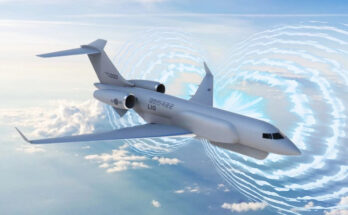Beijing continues to build its stature as a global arms exporter, according to the Pentagon’s annual report to Congress on the military and security developments of the People’s Republic of China (PRC). Per Department of Defense research, China completed over $25 billion worth of arms sales between 2013 and 2017, thereby rising to the level of world’s fourth-largest arms supplier.
This largely mirrors an earlier report released by the Stockholm International Peace Research Institute (SIPRI) in March which noted that China ranked among the world’s top-five largest exporters of defense-related hardware, behind the U.S., Russia, France and Germany, with 5.7 percent of the global total from 2013 to 2017.
The rise of China’s defense budget, aided by decades of strong economic growth, has fed the development of military industrial capabilities. This, in turn, has elevated the profile of China as a regional and global arms supplier.
For most of its history, the PRC has been a net importer of military materiel, relying on the former Soviet Union to help it develop its own military-industrial complex in its early years.
As its defense industrial sector has matured, China has placed a premium on domestic innovation and production. Over time this has allowed the country to reduce its dependency on arms imports, the array of which remain limited due to bans enacted following the communist regime crackdown on Tiananmen Square pro-democracy protesters in 1989.
Whereas China was once an importer of entire military systems, today it primarily imports components – particularly engines sourced from Russia – to equip domestically designed and produced platforms.
Manufacturers such as Aviation Industry Corporation of China (AVIC), China Aerospace Science and Industry Corporation (CASIC), China State Shipbuilding Corporation (CSSC), and China North Industries Corporation (NORINCO) are growing into significant global players in the international arms market, aiding China’s rise to top-five global exporter.
That China should reach this level of global success may seem inevitable from a 21st century lens, but during the embryonic stage of its military-industrial development in the 1950s, such a leap would not have appeared foreordained.
At that time, Chinese weapons exports were largely driven by ideological concerns. China delivered low-tech, largely obsolete weaponry to strategically aligned communist regimes and communist-inspired “national liberation” movements in the developing world. Because China’s defense-industrial base was still primitive and reliant upon Soviet technological assistance and weapons deliveries, communist China mainly acted as an intermediary for the Soviets in theaters of war such as Vietnam.
By the late 1960s, China had forged a close strategic alliance with Pakistan, with massive Chinese arms sales and deliveries to Islamabad providing a crucial cornerstone for burgeoning Sino-Pakistani ties. Through these weapons exports, China was able to cultivate a crucial regional relationship that continues to this day (and Pakistan remains China’s largest weapons export market).
The Iran-Iraq War (1980-1988) provided Beijing with yet another opening into new markets. With both sides requiring fresh influxes of weapons and ammunition, China’s no-strings-attached export policy suited both combatants as they increasingly found themselves marginalized on the international market. The war marked the rise of China as a large weapons supplier on the global market and secured Iran as a lucrative, long-term export market for Chinese defense products.
Today China’s primary export market remains Asia (including Pakistan, Bangladesh and Myanmar, among others), but it has successfully and steadily penetrated parts of the developing world, including Africa, Latin America, and the Middle East.
A particularly successful niche for China has been the area of unmanned combat aerial vehicles (UCAVs). The latest SIPRI report noted that China is today the world’s leading exporter of armed drones, with sales of 153 to 13 countries since 2014.
#China, @SIPRIorg, #UCAV :: China Moves to Number One Spot in Combat Drone Export: SIPRI https://t.co/uWC7mzsord pic.twitter.com/1XYsNVXWd2
— Defenseworld.net (@defenseworld) March 15, 2019
Despite this export success, the reality is that drones are far cheaper to buy than other core military aerospace platforms such as combat aircraft. With much of China’s clientele not exactly swimming in available cash to splash out on expensive military systems, the drone market is naturally more palatable to buyers looking to add numbers and capability while having the added benefit of scoring diplomatic points with Beijing.
Yet drones are not the only area of burgeoning military export success for China. The latest Pentagon report also notes precision-strike weapons (such as WS-3A and WS-22 satellite rockets and various ballistic missile systems) as well as naval combatants (submarines and surface warships) as popular options for importers.
By offering an affordable price point, flexible payment options, and assurance of delivery to the end user, China has steadily cultivated a customer base across the developing world. The lack of political restrictions on the sale and delivery of Chinese hardware to interested parties and the broader trade packages presented to recipient countries by the Chinese government serve to further entice potential buyers. On top of this, Chinese products are often cheaper for the buyer on the export market than Western and even Russian hardware.
Thus the access to a weapons market for countries that may not be able to purchase Western hardware makes Chinese-sourced materiel highly palatable to a buyer. Furthermore, knowing that Beijing will not hold political qualifiers over them (human rights concerns, etc.) means they in turn have a trustworthy provider in that a deal is unlikely to be canceled midstream.
From China’s vantage point, its arms exports help to promote its growing self-sufficiency in defense technology, wield increasing global influence, and support Beijing’s broader foreign policy aims be they economic, political or military.
For now, Chinese arms sales pose a modest challenge to U.S. interests and Washington’s stature as the leading global defense supplier. Indeed, China’s arms export success has eaten into Russia’s market share and presented a greater challenge to Moscow than to the U.S. But going forward, with Chinese defense technologies developing and maturing and China’s influence in areas such as Africa increasing, the U.S. will inevitably feel the brunt of greater competition from its preeminent strategic rival.

Dan Darling is Forecast International’s director of military and defense markets. In this role, Dan oversees a team of analysts tasked with covering everything from budgeting to weapons systems to defense electronics and military aerospace. Additionally, for over 17 years Dan has, at various times, authored the International Military Markets reports for Europe, Eurasia, the Middle East and the Asia-Pacific region.
Dan's work has been cited in Defense News, Real Clear Defense, Asian Military Review, Al Jazeera, and Financial Express, among others, and he has also contributed commentary to The Diplomat, The National Interest and World Politics Review. He has been quoted in Arabian Business, the Financial Times, Flight International, The New York Times, Bloomberg and National Defense Magazine.
In addition, Dan has made guest appearances on the online radio show Midrats and on The Media Line, as well as The Red Line Podcast, plus media appearances on France 24 and World Is One News (WION).




